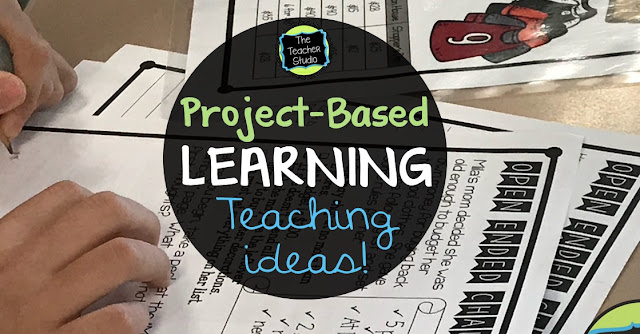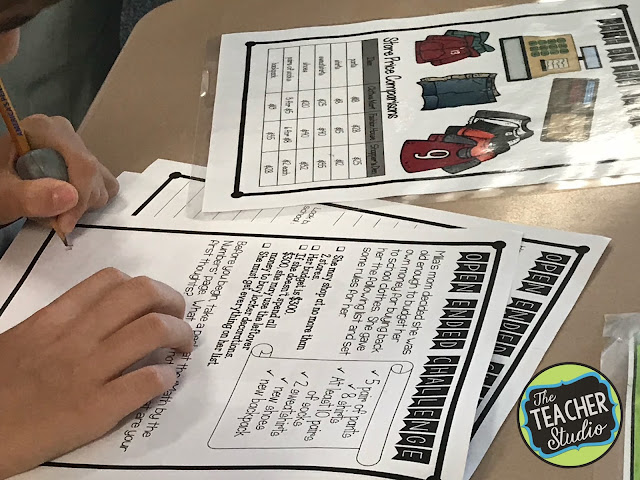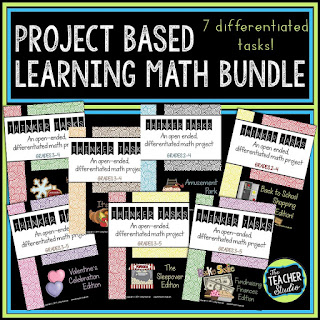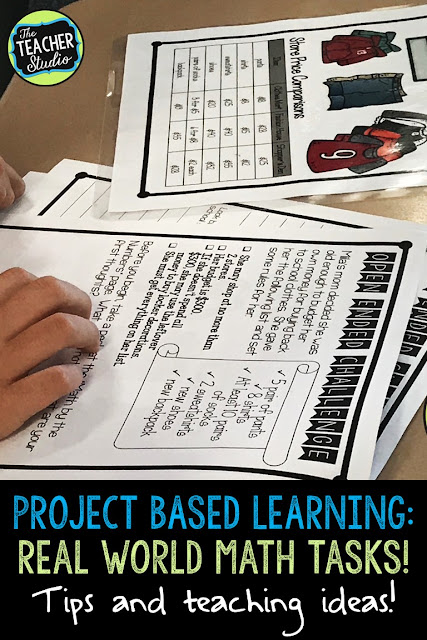
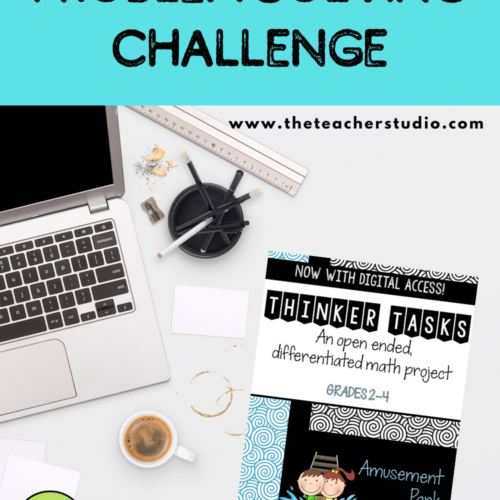



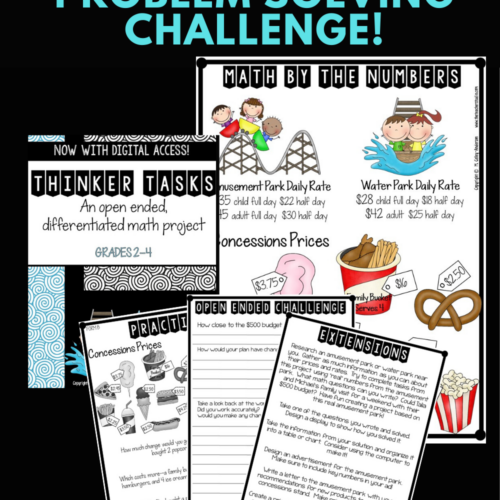
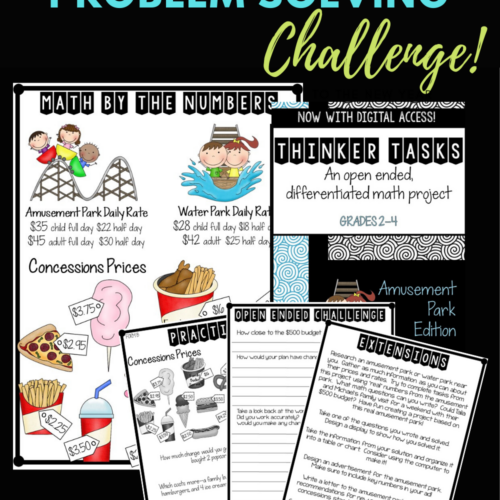
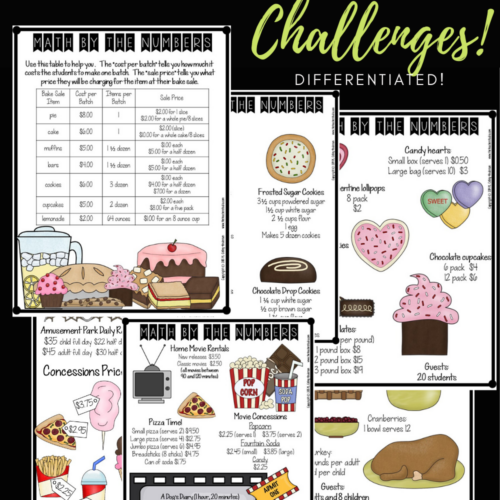
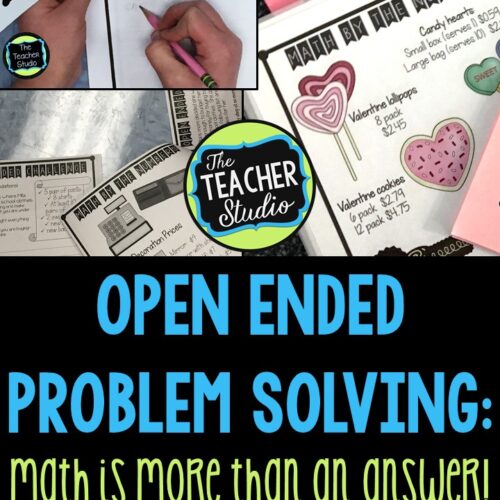
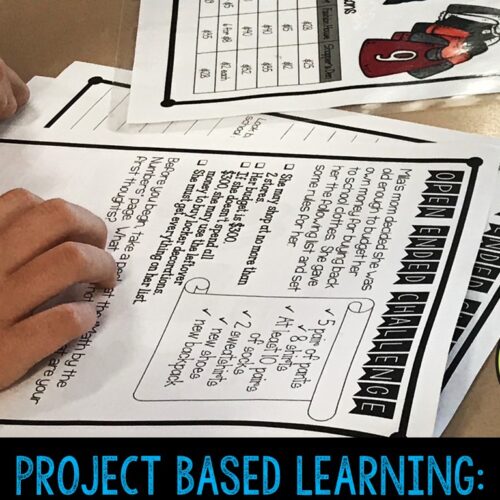
One question I get all the time is, “How do you work your thinker tasks into your daily instruction?”. Today I thought I’d share a little more about how I use these project-based learning experiences!
First of all, if you haven’t seen my “Thinker Task” collection, this video might give you a better sense of what they are and what they involve. I hope you’ll see the benefits of getting students doing “real-world” problem solving and how much math discourse and critical thinking project based learning tasks evoke.
Ready to see more?
How do I use Thinker Tasks and Project Based Learning?
I think what I really love about these tasks is how many different uses they have. I thought I’d list a bunch of different teaching suggestions for you–but I bet you can get even more creative!
- Sometimes I use Thinker Tasks with my whole class. I introduce them to everyone and then students can work alone or collaboratively at their own pace.
- At other times, I use this as a “fast finisher” activity. Everyone has a copy, but some students get far more time to work on it because they need less “me” time for instruction on other things.
- Perfect to use as a station in math workshop or guided math. Once students know what to do, they can be totally independent.
- These tasks are great to help explicitly teach students about the Standards for Mathematical Practice where students can work to justify their thinking, model with math, make sense of problems, persevere, work with precision, and more!
- Two words: Math discourse! These tasks instantly get students talking about math, critiquing each other’s reasoning, defending their thinking and more. They also have multiple opportunities to WRITE about math, something missing in most math series.
- Perfect for special education in middle school. Teachers have raved that the tasks don’t look “baby-ish” but work hard to get students both solving problems AND working on critical computation skills.
- Enrichment groups for grades 2-4. Students love the challenges and teachers love that they can do meaningful work while they work with the rest of the class. The fact that the task itself is challenging is great–but the page of additional extensions means that with very minimal planning, this task can provide meaningful math work for weeks.
- Sometimes I take a few days in a row and we do the complete task. Other times I introduce the task and then students work on it after they finish their other work. In other words, it can be a replacement activity or an extension activity. Perfect to introduce before having a sub–because students are so engaged.
- Wonderful to use to model great math thinking for observation lessons. Administrators love to see students involved with such meaningful math!
- Now available with DIGITAL components so you can use even more flexibly!

What Thinker Tasks are available?
I have very few resources that are “holiday” based because I like the flexibility of using different lessons and ideas when they are the best fit throughout the school year. That being said, sometimes those seasonal times of the year are the trickiest times to keep students engaged in their learning!
For my Thinker Tasks, I have created some of each. I have versions available that can tie to seasons (back to school shopping, a Thanksgiving feast, holiday cookie baking, or Valentine’s Day), but others that can be used at ANY time…students can enjoy working on a sleepover task, an amusement part problem, or an animal rescue problem any time!
How do I differentiate these math tasks?
Another question teachers often have relates to differentiation with Thinker Tasks. Fortunately, there are a ton of options for teachers wanting to use them with students at different levels. Check out these ideas!
- Most of the tasks come with two “Math by the Numbers” sheets with the numbers at different levels. For example, in the Valentine task, one version uses only whole numbers like “$5” while the other uses decimals with amounts like “$4.95”. This, of course, makes the task more rigorous.
- The tasks can be differentiated by providing different amounts of scaffolding. By giving students the chance to be completely independent, they need to “make sense” of the problem on their own and dig in with no guidance. By working with explicit directions and, perhaps, working with students step by step, the task becomes more manageable and easier to tackle.
- Providing students with tools like calculators and manipulatives can make a challenging task more accessible. A child who cannot subtract with regrouping CAN use a calculator to solve a task involving subtraction.
- Working in partners or small groups is an instant way to give students support and still have access to rigorous, quality math.
- Working in differentiated teams allows you to tailor these tasks to small groups with different needs.

